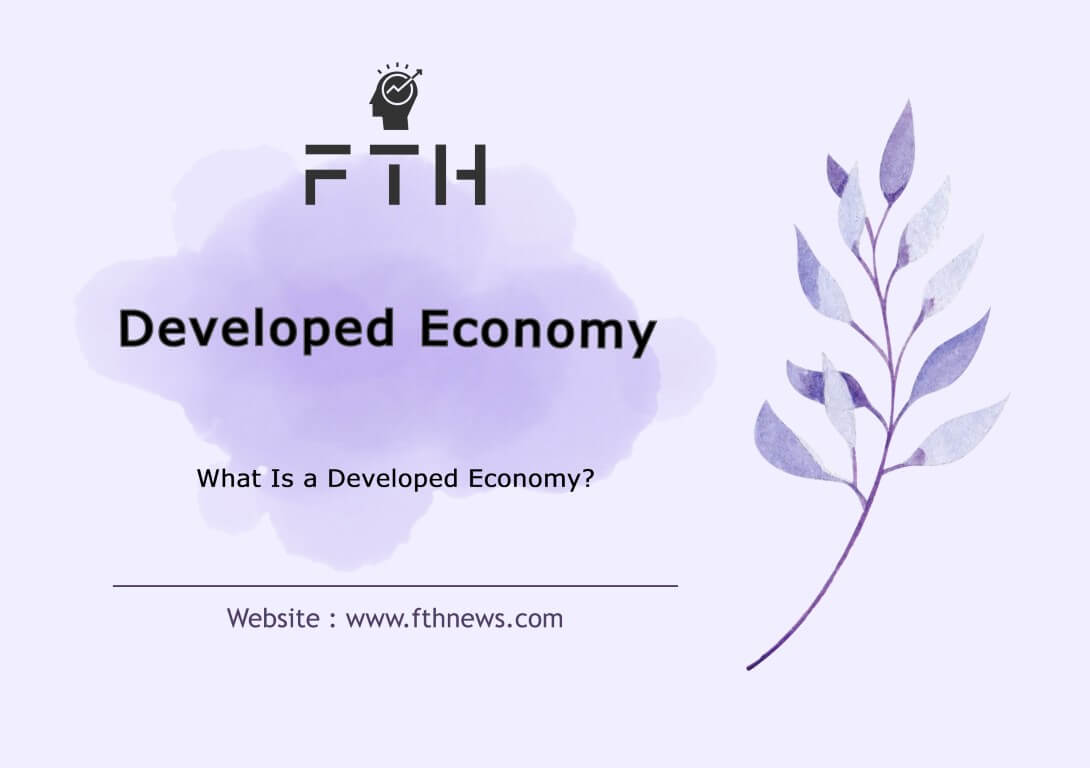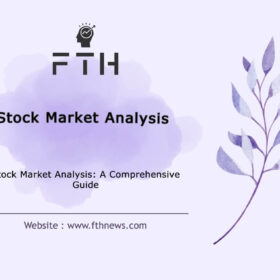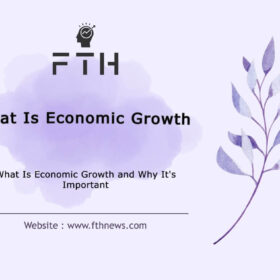
Developed Economy: What Is It and Key Indicators
A developed economy refers to a well-advanced and prosperous economic system with various indicators used to distinguish it from underdeveloped or developing economies.
While Gross Domestic Product (GDP) per capita is a commonly employed measure for this purpose, there is no universally agreed-upon threshold that definitively separates developed from developing economies.
Some economists suggest that a per capita GDP of $12,000 to $15,000 is sufficient to classify an economy as developed, while others set a higher bar, considering only countries with per capita GDP exceeding $25,000 or $30,000 as developed.
Understanding a Developed Economy
Economists often look beyond GDP per capita when classifying the development status of countries that fall into a gray area. They consider various factors such as quality of life measures, including infant mortality rates and life expectancy.
However, even these measures lack clear-cut boundaries. Typically, in developed economies, infant mortality rates are below 10 per 1,000 live births, and the average life expectancy exceeds 75 years.
However, it’s crucial to note that a high GDP per capita figure alone does not necessarily categorize an economy as developed. For instance, Qatar, which boasted one of the world’s highest per capita GDP figures in 2021 at around $62,000, is still considered a developing economy by the United Nations.
This classification is due to severe income inequality in the country and limited educational opportunities for non-prosperous citizens.
Examples of developed economies
Examples of countries recognized as having developed economies
include the United States, Canada, and numerous Western European nations, such as the United Kingdom and France.
Objectives of Development Economics
To gain a comprehensive understanding of development economics, it is crucial to grasp its fundamental goals. As previously mentioned, the primary purpose of development economics is to elevate the living standards of low-income countries through a variety of methods and concepts.
However, development economics goes beyond material welfare, encompassing cultural and human values. It emphasizes not only material well-being but also the intangible aspects, striving to promote freedom, responsible economic and social choices, and the liberation of individuals and nations from oppression, ignorance, and poverty.
Key Objectives:
Development economics aims to achieve several critical objectives, including:
Increasing Access to Goods and Services: This encompasses strategies for enhancing the production and equitable distribution of essential goods such as food, shelter, education, healthcare, and protection.
Raising Per Capita Income: Elevating per capita income is both a measure of success and a component of overall well-being.
Allocation and Provision of Scarce Resources: Ensuring the efficient allocation and gradual expansion of scarce production resources is vital for fostering progress.
Promoting Economic Development: Simultaneously pursuing economic growth and structural changes within countries, often at both local and international levels, to improve the conditions of the underprivileged in underdeveloped nations.
Enhancing Business Conditions, Education, Health, and Living Standards: These goals can be achieved through various means, including private and government assistance.
Rapidly and Broadly Improving the Living Standards of the Less Privileged: This includes those afflicted by poverty, malnutrition, illiteracy, and other hardships.
Understanding the Difference Between Economic Growth and Developed Economy
Economic growth and economic development are two distinct concepts in the field of economics, each with its own meaning and implications. It’s essential to differentiate between them to gain a comprehensive understanding of a country’s economic progress
Economic growth pertains to the sustained increase in a nation’s real national production per capita over an extended period. It’s the quantitative expansion of economic output. Economic growth is often a visible result of development, but it should be noted that not all economic growth equates to development.
Economic growth occurs due to two primary factors:
Quantitative Expansion of Production Factors: This involves increasing the quantity of production factors, such as labor, machinery, and capital. It leads to higher production output and economic growth.
Resource Allocation and Quality Improvement: Besides quantity, the quality of production factors is vital. This includes improving the quality of life for individuals within the society, which contributes to overall economic growth.
Economic Development:
Economic development is a broader concept that encompasses not only economic growth but also qualitative and sustainable progress. It emphasizes improving the well-being and quality of life of a country’s citizens. Economic development involves not only higher income but also factors like education, healthcare, social equity, and environmental sustainability.
Key Differences:
While economic growth focuses primarily on increasing the quantity of goods and services produced, economic development encompasses a wider array of factors that enhance the overall living standards of the population. These factors include education, healthcare, infrastructure, social equality, and environmental preservation.
In summary, economic growth represents the quantitative expansion of a nation’s economic output, while economic development embraces a more holistic approach that seeks to improve the well-being and quality of life for its citizens, taking into account a variety of social and environmental factors.
Understanding the distinction between these two concepts is crucial for policymakers and economists to create strategies that contribute to both growth and development.
Developing Economies:
Commonly used terms like “emerging countries,” “less developed countries,” and “developing countries” describe nations that lack the economic stability, industrialization, and growth seen in developed countries. It’s worth noting that the term “Third World Country” is considered outdated and offensive when referring to modern governments.
The United Nations Conference on Trade and Development underscores the significant challenges faced by less developed countries in their development journey, often due to geographical factors. These nations are at a higher risk of remaining mired in poverty compared to their more developed counterparts.
Developed Economy Indicators
To measure the level of development in countries, various economic indicators are used. Here are some key indicators:
Per Capita Income Index:
This index is calculated by dividing a country’s income (Gross Domestic Product) by its population.
It is often compared to the per capita income of developed countries and provides insights into the wealth or poverty of a population.
Note that factors such as age and gender are not considered in this index.
Purchasing Power Parity Index (PPP):
This index evaluates the purchasing power of people in different countries.
Higher purchasing power is associated with better economic conditions and greater prosperity.
It is based on the economic theory that prices of goods and services should be comparable across countries over time.
Sustainable Income Index:
This index, an extension of per capita income, factors in the environmental costs associated with economic growth and production in national accounts.
Human Development Index and Developing Economies
The Human Development Index (HDI), established by the United Nations, is a critical tool for assessing the well-being and development of nations. It combines several key indicators, including literacy rates, access to education, and access to healthcare, and transforms this data into a standardized number, typically ranging from zero to one. Most developed countries boast HDI figures above 0.8.
Human Development Index (HDI): In the annual Human Development Index ranking for 2020, Norway claimed the top spot with a remarkable HDI of 0.957. Meanwhile, the United States secured the 17th position with a score of 0.926. Notable mentions in the top 10 HDI countries include Ireland, Switzerland, Hong Kong, Iceland, Germany, Sweden, Australia, Netherlands, and Denmark. At the opposite end of the spectrum, Niger held the lowest human development index score among 189 countries, registering a figure of 0.394.
Economic Development Examples:
Economic development is a multifaceted process with various examples:
Policy for Innovative Job Creation: Implementing policies that create new and innovative jobs to address graduate unemployment issues.
Infrastructure Development: Investing in air infrastructure to facilitate international air travel and trade.
Educational System Reform: Undertaking fundamental changes in the education system to train specialized personnel for specific areas of development.
Startup Incentives: Creating incentives and support for startups to drive economic growth.
The Importance of Economic Development:
Societal challenges require effective tools. Gradual growth alone cannot address deep-rooted economic problems such as unemployment, poverty, and food insecurity. Economic growth can offer some improvement, but high-slope growth and the creation of new infrastructures are essential to transform underdeveloped and developing societies into developed ones. Economic development not only solves problems but also enhances the overall quality of life.
Strategies for Economic Development:
Economic development strategies are the methods by which nations pursue economic growth and advancement. Economists recognize a range of strategies that encompass monetary, open economy, industrial development, green, redistribution, and socialist approaches. Each strategy is tailored to specific economic contexts and objectives.
Monetary Strategy:
A monetary strategy focuses on enhancing market signals to guide resource allocation. It is employed during critical economic situations and can lead to an overall improvement in price levels. Private sector participation is crucial for the success of this strategy, with the government playing a role in ensuring stability and minimal interference. Innovation and entrepreneurship are key drivers of this approach.
Open Economy Strategy:
The open economy strategy directs attention outward, relying on private sector engagement in foreign trade and investment. It involves transforming exchange rate policies, import tariffs, quotas, and trade laws to eliminate barriers to trade.
Industrial Development Strategy:
This approach centers on expanding and nurturing industries with a competitive advantage and strong market demand. The goal is to enhance resource efficiency and stimulate industrial growth. Incentive policies and direct investment in areas like innovation support this strategy.
Green Strategy:
The green strategy focuses on agricultural development, particularly in food production. By increasing food supply, prices decrease, reducing labor costs and boosting industry profitability and growth. This approach also stimulates demand for agricultural inputs and intermediate capital goods, creating a larger market and more employment opportunities.
Redistribution Strategy:
Income redistribution is the hallmark of this strategy, aiming to balance the benefits among various income groups. It emphasizes employment creation, effective tax redistribution, and the provision of minimum welfare through government intervention during the economic development process.
Socialist Development Strategy:
In this strategy, governments play a dominant role, directly investing in large companies and implementing centralized planning. Centralized control governs the allocation of resources and production of goods and services.
Economic Development and Planning:
Effective economic development planning aims to build local economic resilience and power. It includes a comprehensive perspective on the economy, policy making for economic growth, and the identification of strategies, programs, and projects that leverage local, regional, and international capacities. A competitive vision that adapts to opportunities and threats is essential for successful economic development planning.
In conclusion, economic development planning should embrace a flexible and competitive vision, utilizing both local and international resources to achieve meaningful progress in society.
FAQ
A developed economy is an advanced and highly industrialized nation with high income levels, extensive infrastructure, a well-educated workforce, and a strong standard of living. It typically exhibits stability, technological advancement, and a diverse economy with a focus on services and innovation.
High Income Levels
Advanced Infrastructure
Highly Educated Workforce
Strong Standard of Living
Technological Advancement
Economic Diversity
Political Stability
Low Poverty Rates
Access to Capital
Quality of Life
A developed economy is advanced, with high income and modern infrastructure. A developing economy is transitioning, facing challenges like poverty and limited infrastructure.














